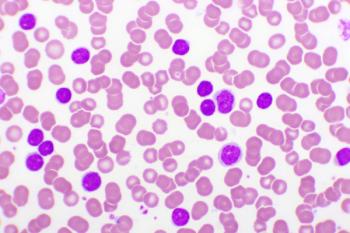
Hemorrhagic Events After Essential Thrombocythemia Diagnosis Strongly Linked to Early Death
Key Takeaways
- Hemorrhagic events post-diagnosis in patients with ET significantly increase mortality risk, more than thrombosis or disease progression.
- Intracranial hemorrhage is the most lethal bleeding complication, with gastrointestinal and mucosal bleeding posing lower immediate risks.
A recent study suggests hemorrhagic events following essential thrombocythemia diagnosis are among the most significant predictors of early death.
New evidence from the largest Japanese study of patients with essential thrombocythemia (ET) to date has indicated that post-diagnosis hemorrhagic events are a critical predictor of early mortality, even more so than traditional concerns including thrombosis, disease progression, or secondary malignancies.1
Among over 1,000 patients with ET, those who experienced bleeding events after diagnosis were nearly 3 times more likely to die than those who did not, even after adjusting for baseline clinical characteristics.
While thrombosis has traditionally dominated
Publishing their findings in
Using time-dependent Cox regression and multistate Markov modeling, the team found that hemorrhagic events carried a hazard ratio (HR) for death of 2.92 (95% CI, 1.78–4.78, P < .001), compared with HRs of 1.03 for thrombosis and 1.19 for disease progression, neither of which were statistically significant. Secondary malignancy had an HR of 1.56 but did not reach significance.
The researchers performed a multistate model to simulate patient transitions through 6 health states, including diagnosis, thrombosis, hemorrhage, disease progression, secondary malignancy, and death. The model showed that the transition hazard from a hemorrhagic event to death was higher than from any other intermediate state, indicating a more direct path to mortality.
Notably, while thrombosis and disease progression are more common events, patients were more likely to live longer after these complications than after a hemorrhagic event. Among patients whose first major complication was a hemorrhagic event, more than 70% of those who died had the bleeding event listed as the direct cause of death.
Among bleeding events, intracranial hemorrhage was most associated with death, consistent with prior studies. Gastrointestinal and mucosal bleeding were also observed but carried lower immediate mortality risk.
Earlier European studies estimated major bleeding in ET to occur in 4.5% to 12.5% of patients, with up to a 25% mortality rate. The present Japanese study corroborates these data and adds that post-diagnosis bleeding, not baseline risk factors, has the strongest effect on survival.
The researchers emphasized the importance of preventing bleeding events through personalized use of antiplatelet or cytoreductive therapies and closer monitoring of high-risk patients. However, the authors caution that missing data on treatment timing limits conclusions about which regimens offer the most protection.
As a retrospective study, the analysis was subject to incomplete data and potential confounders. The severity of hemorrhagic events was not consistently documented, and molecular features, such as non-driver mutations, were not included. A companion prospective study (JSH-MPN-15) is underway to explore these factors and evaluate the impact of specific treatments. Despite these limitations, the current data represent the most comprehensive evaluation to date of real-world outcomes for ET patients in Japan.
References
1. Hashimoto Y, Ito T, Gotoh A, et al. Post-diagnosis hemorrhagic events are strongly associated with poor survival in patients with essential thrombocythemia. eJHaem. Published online July 15, 2025. doi:10.1002/jha2.70103
2. Tefferi A, Vannucchi AM, Barbui T. Essential thrombocythemia: 2024 update on diagnosis, risk stratification, and management. Am J Hematol. 2024;99(4):697-718. doi: 10.1002/ajh.27216
Newsletter
Stay ahead of policy, cost, and value—subscribe to AJMC for expert insights at the intersection of clinical care and health economics.







































